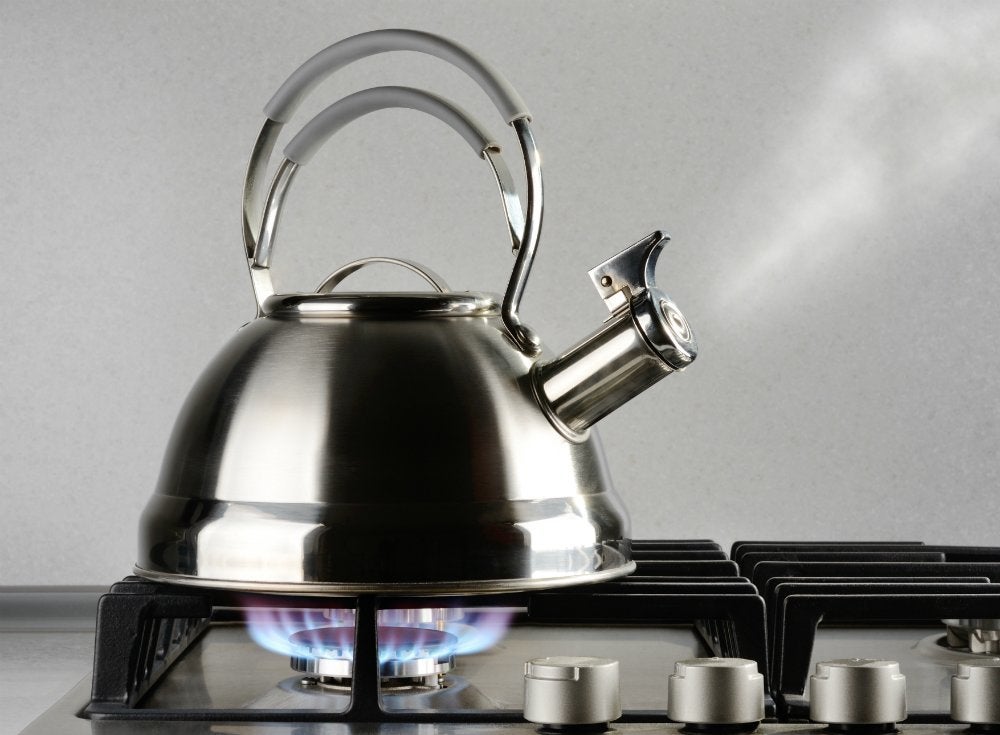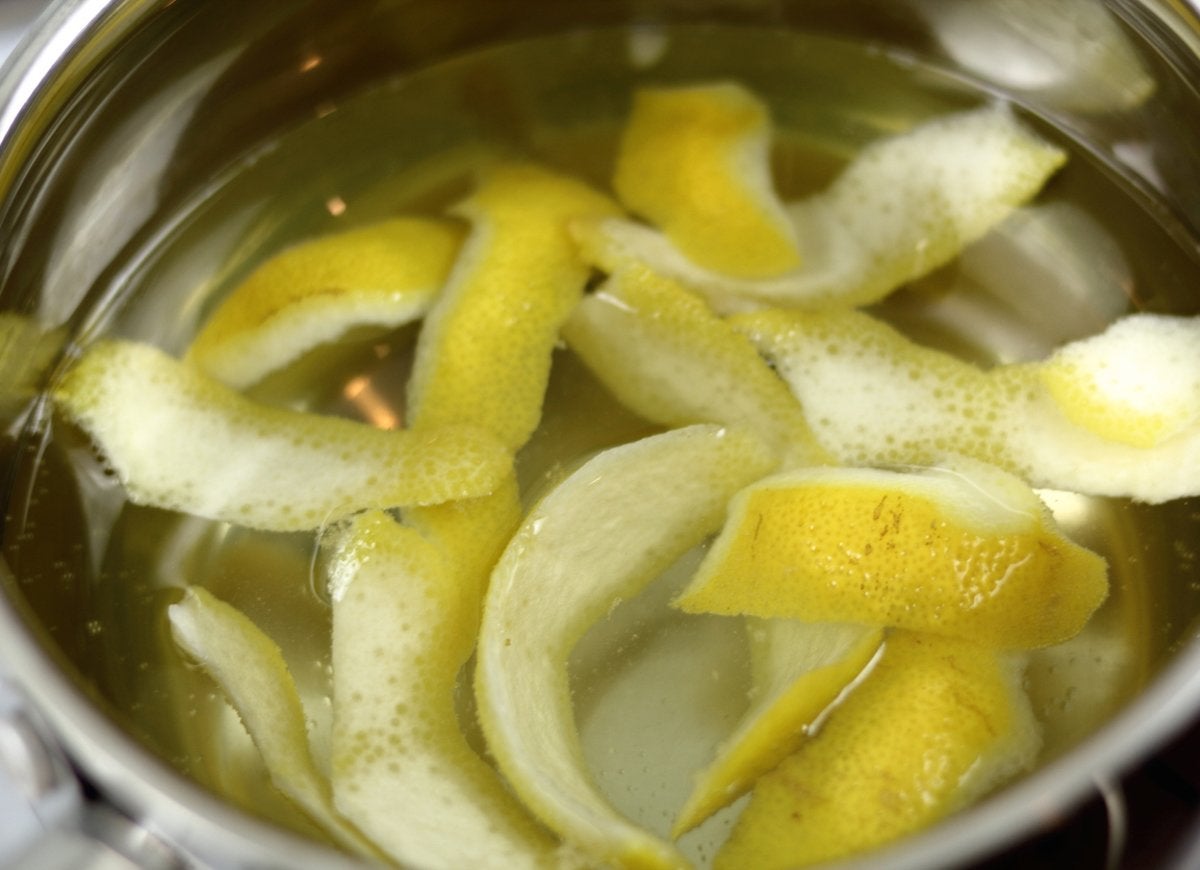

We may earn revenue from the products available on this page and participate in affiliate programs. Learn More ›
Home Advice You Can Trust
Tips, tricks & ideas for a better home and yard, delivered to your inbox daily.
Run an Air Purifier

If you’ve done your seasonal housework by weatherstripping your windows and doors, and closing up gaps and cracks in your siding, you’ll be rewarded with energy efficiency and lower heating bills. The downside to a buttoned-up house, however, is that indoor air pollutants become trapped within the walls of your home. Banish them the easy way by switching on an air purifier. You can choose from a whole-house model or a portable model that can be plugged into an outlet wherever and whenever you need it.
Cultivate Houseplants

Alternatively, you can combat poor indoor air quality by cultivating some of nature’s own air purifiers. Several hardy species have been scientifically proven to remove impurities from the air. And that’s in addition to the gifts that these living things of beauty already bestow to decor.
Use a Humidifier

The minute you turn on the heat, the air in your home gets drier. And since dry air feels cooler than moist, homeowners crank the heat up even higher, in turn making the air even dryer and more uncomfortable. It’s a vicious cycle! Therefore, a one-room or whole-house humidifier can not only undo the familiar effects of dry air, but it can also help you keep the thermostat at a money-saving low.
Humidify the DIY Way

Although it helps, you don’t actually need a humidifier to increase the moisture content of the air in your home. You can always humidify the DIY way by leaving out saucers of water.
Radiator Humidifier

Better yet is to position those saucers of water near heat sources—radiators, for instance, or forced-air vents. The heat hastens evaporation, creating more humidity more quickly.
Omit the Oven

Use of the oven tends to dry out the air, while cooking on the stovetop does the opposite. So whether you’re boiling water for tea or heating up a frozen pasta dish, do it on the stovetop (and not, for example, in the microwave). Through the dry winter months, every bit of incidental moisture can help you feel more comfortable home—for free and for very little extra effort.
Air-Dry the Dishes

Here’s another free and extremely easy way to increase the moisture content of dry indoor air: At the end of a dishwasher’s rinse cycle, open the door to the appliance and pull out the rack, letting the clean dishes air-dry in the kitchen. Like cooking on the stovetop, air-drying the dishes allows you to accomplish two household tasks at once. Your dishes do dry, but in a way that contributes to the health and comfort of your home.
Line Dry

There’s no real downside to line drying your linens and clothes, except that it takes longer than using a clothes dryer. On dry winter days, drying your laundry on an indoor clothesline brings much needed moisture into your home. As added benefits, line drying is more cost-effective and environmentally friendly than machine drying. Plus, you’ll lengthen the life of your clothes when you line dry them, as the heat and friction of a machine dryer takes a toll on fibers.
Shower with Door Open

You might not want to try this next one if you’re using a shared bathroom at home. But if you can count on a reasonable amount of privacy, try leaving the bathroom door ajar next time you shower. The steam from hot water will travel from the bathroom into the rest of your home, combating dry and static-filled indoor conditions.
Let Bathwater Sit

Similarly, the steam that rises from a hot bath can do wonders for your indoor air. Increase the effectiveness of your bathwater in fighting dry winter air by letting the water cool before draining it. As the bath cools, steam will rise from the water and evaporate into your home, acting as a DIY humidifier.
Dust Regularly

If you suffer from allergies, being at home during the winter can actually make you feel sick—unless you reevaluate your cleaning practices. Allergens, dust, and dust mites build up on household surfaces over time so clear the air by dusting surfaces at least once a week, and don’t forget the trim above the door, stair spindles, baseboards, the top of the fridge, and other oft-forgotten dust traps.
Vacuum Vigorously

After you dust, make it a point to vacuum more frequently than you would at other times of year. Doing so goes a long way toward minimizing allergens, so you can breathe easy.
Steam Clean Your Carpets

When vacuuming isn’t enough to banish the dirt and dust that diminishes indoor air quality, consider steam cleaning your carpets once every month or two. If you’re not ready to buy a steam cleaner for occasional use and you don’t want to hire a pro, you can easily rent a cleaner at many home centers.
Skip Air Fresheners

It may seem counterintuitive but many air fresheners actually decrease air quality. Store-bought air fresheners, even some that are labeled as “green” or “natural,” contain chemicals—and these chemicals can be hazardous to your health. If you’re looking for a cleaner way to freshen stale indoor air this winter, simmer a pot of water, fruits, and fresh herbs on your stove.
Crack a Window

Whenever possible—on an unseasonably warm day, for example—why not open the windows? Though chilly, fresh air offers an immediate remedy for stuffy air that may be harboring impurities, whether from cleaning supplies or fireplace woodsmoke. While you’re at it, consider a trickle vent: These simple openings admit fresh air, and equally important, they provide an escape for stale air.

Meet the 2025 Tools of the Year
After months of scouring the market and putting products through their paces, we’ve named the best of the best in new tools. There’s something for everyone, from veteran pros to average Joes.